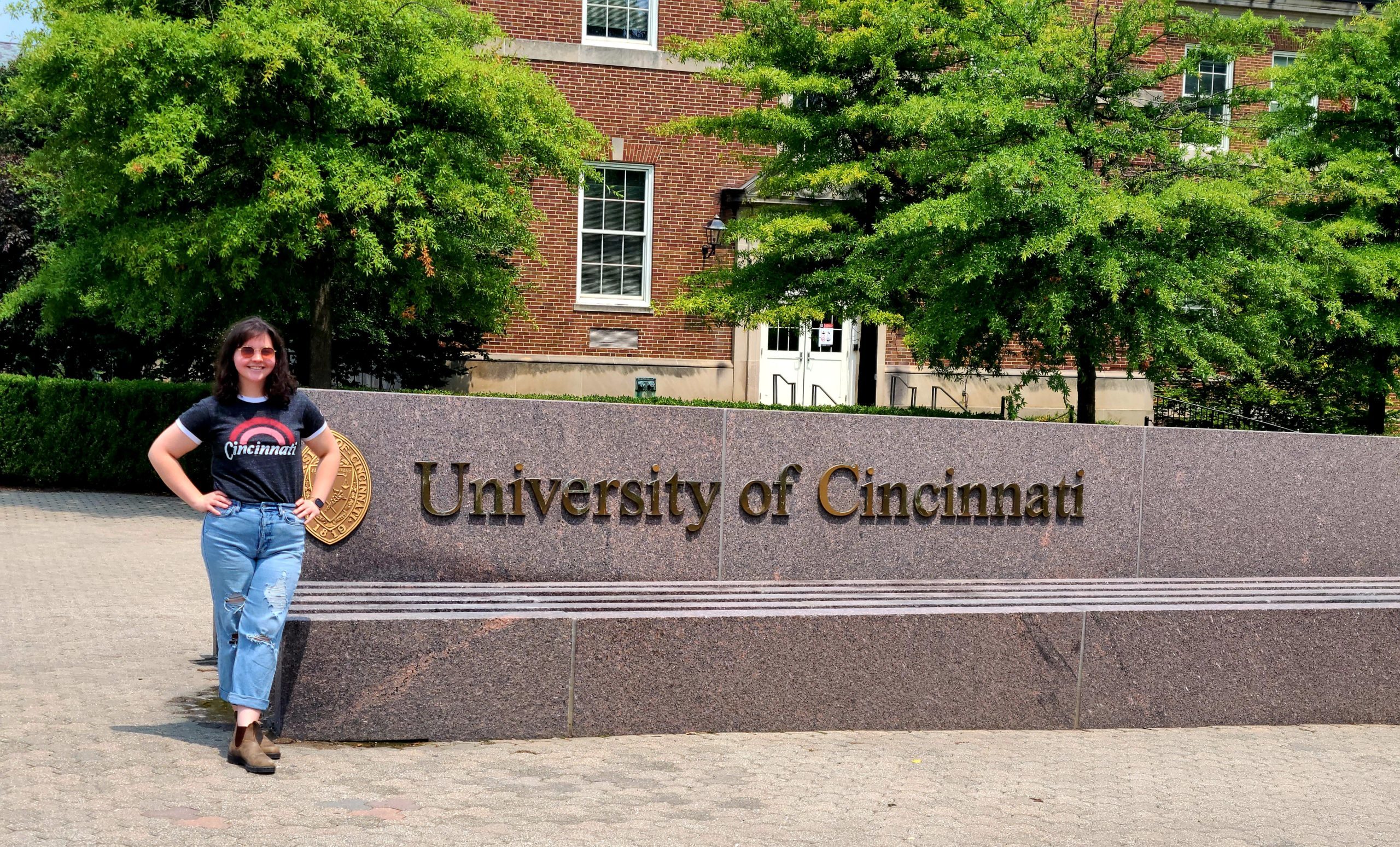by Mike Templeton
Erinn Sweet is the Communications Specialist for the Urban Appalachian Community Coalition. All the forms of communication and information that turn up in the UACC Newsletter, this blog, and social media come to us because Erinn makes it happen. Erinn is also currently conducting interviews as part of the research for her master’s thesis at the University of Cincinnati’s School of Communication, Film, and Media Studies. These interviews are part of a qualitative study of urban Appalachian women’s experiences and identity. She is still in need of participants, and this is an exciting opportunity for urban Appalachian women to become a part of how scholars understand urban Appalachian women’s identity and experience.
When I spoke to Erinn, she had just completed her first interview with a woman whose experience is both typical of the urban Appalachian experience and genuinely unique, a complexity that is at the center of Erinn’s research. Erinn said she is interested in how urban Appalachian women talk about themselves and their experience, and how these forms of self-identification vastly complicate the overly reductive ideas of what we mean by urban Appalachian identity and experience. The lives of urban Appalachian women, as Erinn has discovered from her research as much as her own experience, present the antithesis of the simplistic and popular images offered by the likes of J.D. Vance. Her work reveals a vastly complex and diverse set of experiences and identities.
As Erinn explained: “My project evolved from my initial ideas of just doing a critical text analysis that compared popular text, such as J.D. Vance’s Hillbilly Elegy, to text written by Appalachian women. However, my advisor led me away from this literary methodology and toward a communication study that engaged in a more direct qualitative analysis that involves talking to people who have lived these experiences.” With the guidance and inspiration of Core members of UACC, she came to understand that “we cannot separate the urban Appalachian experience from the issue of migration,” she told me, “and this latter issue is a driving force in the lives of urban Appalachian women.” As with all important research, Sweet’s work involves real data acquired through direct interviews even as this data is shaped by methodology derived from diverse forms of previous research in communication, sociology, Appalachian studies and feminist theory.
Some of Erinn’s theoretical approach to her research is informed by scholars like Patricia Collins and bell hooks, whose work on race, class, and gender provide a powerful set of tools for how we can understand the complex and varied realities of urban Appalachian women’s experiences. Erinn said that “Collins’s work helps us to understand ideas like the ‘outsider within.’” This is a set of cultural phenomena in which people from outside a dominant culture find their way toward a space within that culture while always aware that they remain outsiders on some level. Collins’s research on race, class, and gender provides a lens by which researchers like Erinn Sweet can come to explain Appalachian women’s experiences and self-definitions. As Erinn explains: “Collins’s work in Black feminist thought offers me a way to learn from diversity toward a greater understanding of our own Appalachian identity and history.”
Erinn Sweet’s own family provides some of the background for her research, and this is one of the things that motivates her to take on this kind of project. Originally from Whitley County, Kentucky, Erinn said, “I am using my own history to help navigate this project.” She recounted how her own grandmothers and great grandmothers had been marginalized through gender and class constraints. This family history also necessarily entails migration stories from rural Appalachia to urban centers where industry provided jobs. The internal family tensions that resulted from migration and labor, as well as the cultural tensions inherent to being people displaced from their home places provides a powerful starting point for a research project focused on urban Appalachian women’s experiences and self-definitions.
Coming from a world where women were essentially denied the right to define themselves to a place where they are forced to define themselves or be defined by others provides Erinn Sweet with a first-hand view of how difficult and complex these peoples’ lives can be. As she thought about these experiences and memories, she told me: “No wonder I was pushed to leave home and pushed toward education.” It is the drive toward education that brought Erinn Sweet to Northern Kentucky University and now to the University of Cincinnati where she is completing her master’s degree with this research project.

Erinn Sweet’s research asks for women to volunteer to be interviewed about their life and their experiences. It is open to anyone 18 years of age and older. Erinn is emphatic that she wants to hear from women from the most diverse backgrounds. As she explained: “There is no one way of being Appalachian, but being Appalachian collectively gives us a way of talking about it.” As the Communications Specialist for the Urban Appalachian Community Coalition, Erinn Sweet makes it possible for us to see, read, and hear the stories that impact our communities. Please consider volunteering to talk to her for her research for her master’s thesis at the University of Cincinnati’s School of Communication, Film, and Media Studies. Here is the email to participate in this study: [email protected].
Mike Templeton is a writer, independent scholar, barista, cook, guitar player, and accidental jack-of-all-trades. He is the author of the forthcoming The Chief of Birds: A Memoir. Available later this year from Erratum Press, and Impossible to Believe, forthcoming from Iskra Books. Check out his profile in UACC’s new Cultural Directory. He lives in downtown Cincinnati with his wife who is a talented photographer. They spend their free time walking around the city snapping photos. She looks up at that the grandeur of the city, while Mike always seems to be staring at the ground.

